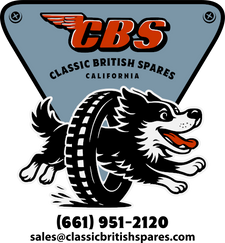The BSA A65 Oil Pump Journal 1962-1972
The BSA A65 Oil Pump Journal
![]()
![]()
"Early" BSA Oil Pump 1962-1966
![]()
![]()

![]()

![]()
"D" & "DD" BSA Oil Pump 1967-1970
The "mid" production BSA oil pumps as fitted to the 500 and 650 twin range from 1967-1970 are the "better" oil pumps, but, not the best. The reason why they are better is simply because the updated external and internal design. I like to call these oil pumps "D" or "DD". The reason why I call the oil pumps that term from 1967-1970 is simply because you will find that the external bodies will either have a "D" stamped or a "DD" stamped on the outside body. The "D" I have been told stands for "dowel", the "DD" I also have been told (and read) stands for "double dowel". I have seen both pumps apart with the "D" stamping and the "DD" stamping and I cannot find any differences between the two. I can only assume that the the "D" oil pump is the same as the "DD" oil pump but I cannot confirm that.
![]()
Both pumps have the new "dowel" designs which prevents the pump from flexing and helps to locate the two separate parts. Early oil pumps from approx 1962-1966 did not have this feature. One of the biggest areas of a British motorcycle has always lacked in, is a lack of oil flow and pressure. To tackle this down fall, the BSA "D" and the "DD" oil pumps internal gears where enlarged slightly to help boost oil pressure and flow to the crankshaft and back to the oil tank (return). In my opinion, the "D" oil pumps and the "DD" oil pumps are a better choice than the early BSA oil pumps.
![]()
Shown above is the top portion of a BSA unit twin oil pump. Notice that the upper body has the letter "D" stamped on the top? That's because this oil pump has the locating dowels.
![]()
The two locating dowels or pins can be seen above on this BSA "D" oil pump. As stated before, I have read from a source that oil pumps stamped with a single "D" means that they only have one dowel... this debunks that theory as this has two.
![]()
BSA "Cast Iron" Oil Pump 1971-1972
The BSA cast iron oil pump. Also known as the best oil pump and the rarest of them all. What makes the cast iron oil pump so sought after is the material in which it is made from. The earlier oil pumps before mid 1971 where made from a "pot-metal" alloy type material which is prone to wear and tear. I am not sure why it took BSA so long to develop a better quality oil pump. For those who own BSA unit singles, you will also notice that the 1971-1972 models had cast iron oil pumps installed. The problem with the cast iron oil pumps are, is that they are rare and expensive! The only alternative to the cast iron oil pump is going with a SRM oil pump. The cast iron oil pump can be fitted to all BSA A50 and A65 models from 1962-1972 and is the best upgrade in my opinion.
![]()
![]()
The BSA cast iron oil pump also weighs significantly more. Cast Iron @1 pound 3.8oz Alloy @ 15.8oz. Cast iron has always been known to be a heavy type and harder material.
![]()
Left end plate is correct for the later oil pumps that use bolts rather then screws. The right end plate accepts the screws. Notice that the right end plate has holes are that countersunk?







mark parker
The DD pumps I have are alloy and all from ’71 with bigger length gears compared to Ds and earlier pumps, these are very good high volume pumps. The problem with these and other pumps is when they leak at the joint to the front housing. This oil leaks from the pump before it reaches the check valve and over time can cause wet sumping. I think cold oil pressure of over 90-100psi puts some stress on the somewhat small pump bolts.
Mick Barratt
Just a note about using the cast iron pumps. I wanted to fit one to a ‘68 Lightning engine I was rebuilding, and the inner cover has a boss for the later locating dowel. I had to grind away a fair bit of metal from the front mounting lug of the pump to get the cover to fit over it. An excellent resume on the pumps anyway, I’m pleased that you did not mention the DD as standing for double delivery as some people insist on doing!
Classic British Spares
@Roy Smith Very interesting, I will keep that information! Thank you for sharing :)
Roy Smith.
Good article again, You can rebuild these pumps by machining a new base from EN32 steel and lapping the gears in to suit.( they wear grooves in the old base which reduces volume).
Classic British Spares
@David Patterson That is correct. I do not believe there was recorded change. Thanks for reading and commenting today!